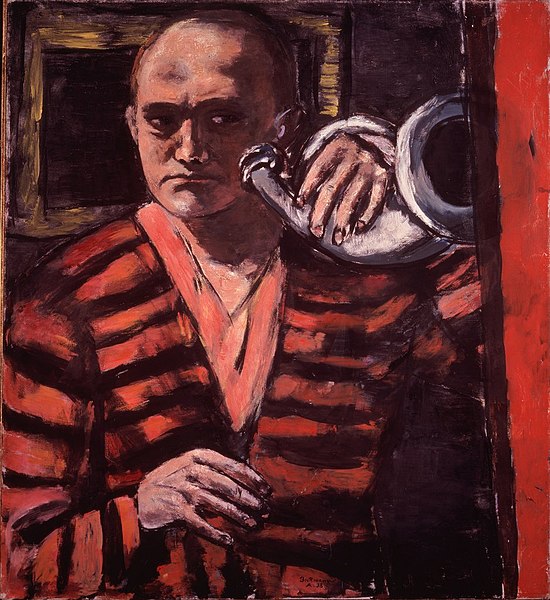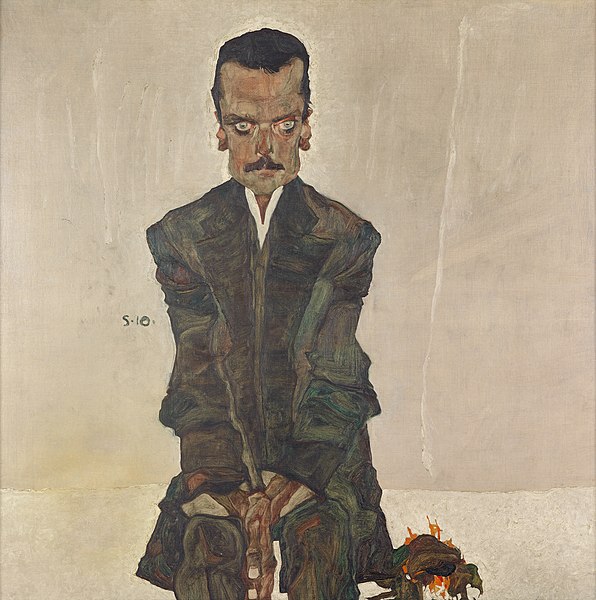American Figurative Expressionism
American Figurative Expressionism is a 20th-century visual art style or movement that first took hold in Boston, and later spread throughout the United States. Critics dating back to the origins of Expressionism have often found it hard to define. One description, however, classifies it as a Humanist philosophy, since it is human-centered and rationalist. Its formal approach to the handling of paint and space is often considered a defining feature, too, as is its radical, rather than reactionary, commitment to the figure.
A detail from Ben Shahn's "The Passion of Sacco and Vanzetti" series, 1931-32.
Edvard Munch, The Scream, oil, tempera and pastel on cardboard, 1893, National Gallery, Oslo
Max Beckmann's Self-Portrait with Horn, oil on canvas, 1938.
Kandinsky's Der Blaue Reiter, painted in a style Kandinsky would reject within the decade, oil on canvas, 1903, Stiftung Sammlung E.G. Bührle, Zurich.
Expressionism is a modernist movement, initially in poetry and painting, originating in Northern Europe around the beginning of the 20th century. Its typical trait is to present the world solely from a subjective perspective, distorting it radically for emotional effect in order to evoke moods or ideas. Expressionist artists have sought to express the meaning of emotional experience rather than physical reality.
Edvard Munch, The Scream, c.1893, oil, tempera and pastel on cardboard, 91 × 73 cm, National Gallery of Norway, inspired 20th-century expressionists.
El Greco, View of Toledo, c.1595/1610 is a Mannerist precursor of 20th-century expressionism.
Wassily Kandinsky, Der Blaue Reiter, c.1903
Egon Schiele, Portrait of Eduard Kosmack, c.1910, oil on canvas, 100 × 100 cm, Österreichische Galerie Belvedere







